Valentino Constantinou
Deep Learning Driven Detection of Tsunami Related Internal GravityWaves: a path towards open-ocean natural hazards detection
Aug 08, 2023Abstract:Tsunamis can trigger internal gravity waves (IGWs) in the ionosphere, perturbing the Total Electron Content (TEC) - referred to as Traveling Ionospheric Disturbances (TIDs) that are detectable through the Global Navigation Satellite System (GNSS). The GNSS are constellations of satellites providing signals from Earth orbit - Europe's Galileo, the United States' Global Positioning System (GPS), Russia's Global'naya Navigatsionnaya Sputnikovaya Sistema (GLONASS) and China's BeiDou. The real-time detection of TIDs provides an approach for tsunami detection, enhancing early warning systems by providing open-ocean coverage in geographic areas not serviceable by buoy-based warning systems. Large volumes of the GNSS data is leveraged by deep learning, which effectively handles complex non-linear relationships across thousands of data streams. We describe a framework leveraging slant total electron content (sTEC) from the VARION (Variometric Approach for Real-Time Ionosphere Observation) algorithm by Gramian Angular Difference Fields (from Computer Vision) and Convolutional Neural Networks (CNNs) to detect TIDs in near-real-time. Historical data from the 2010 Maule, 2011 Tohoku and the 2012 Haida-Gwaii earthquakes and tsunamis are used in model training, and the later-occurring 2015 Illapel earthquake and tsunami in Chile for out-of-sample model validation. Using the experimental framework described in the paper, we achieved a 91.7% F1 score. Source code is available at: https://github.com/vc1492a/tidd. Our work represents a new frontier in detecting tsunami-driven IGWs in open-ocean, dramatically improving the potential for natural hazards detection for coastal communities.
Detecting Anomalous Invoice Line Items in the Legal Case Lifecycle
Jan 17, 2021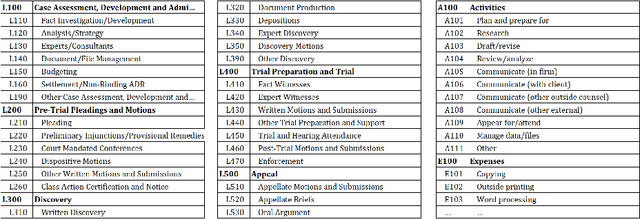

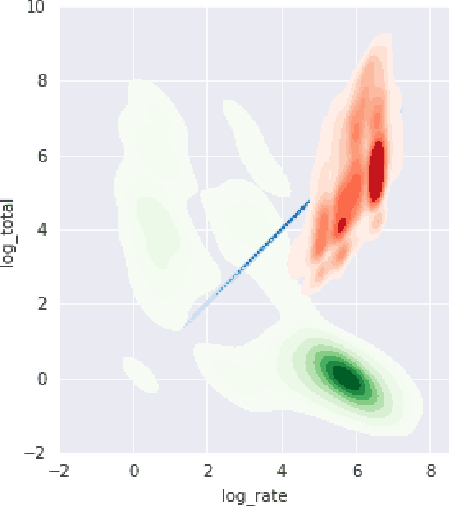
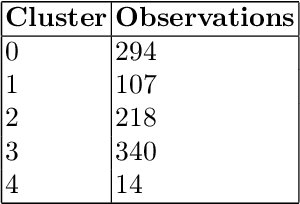
Abstract:The United States is the largest distributor of legal services in the world, representing a \$437 billion market. Of this, corporate legal departments pay law firms \$80 billion for their services. Every month, legal departments receive and process invoices from these law firms and legal service providers. Legal invoice review is and has been a pain point for corporate legal department leaders. Complex and intricate, legal invoices often contain several hundred line-items that account for anything from tasks such as hands-on legal work to expenses such as copying, meals, and travel. The man-hours and scrutiny involved in the invoice review process can be overwhelming. Even with common safeguards in place, such as established billing guidelines, experienced invoice reviewers (typically highly paid in-house attorneys), and rule based electronic billing tools ("e-billing"), many discrepancies go undetected. Using machine learning, our goal is to demonstrate the current flaws of, and to explore improvements to, the legal invoice review process for invoices submitted by law firms to their corporate clients. In this work, we detail our approach, applying several machine learning model architectures, for detecting anomalous invoice line-items based on their suitability in the legal case's lifecycle (modeled using a set of case level and invoice line-item-level features). We illustrate our approach, which works in the absence of labeled data, by utilizing a combination of subject matter expertise ("SME") and synthetic data generation for model training. We characterize our method's performance using a set of model architectures. We demonstrate how this process advances solving anomaly detection problems, specifically when the characteristics of the anomalies are well known, and offer lessons learned from applying our approach to real-world data.
Detecting Spacecraft Anomalies Using LSTMs and Nonparametric Dynamic Thresholding
Jun 06, 2018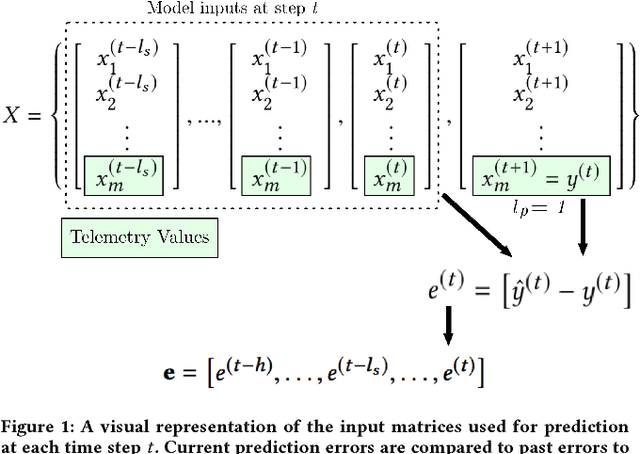
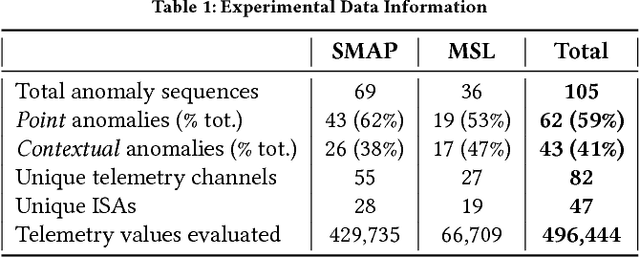
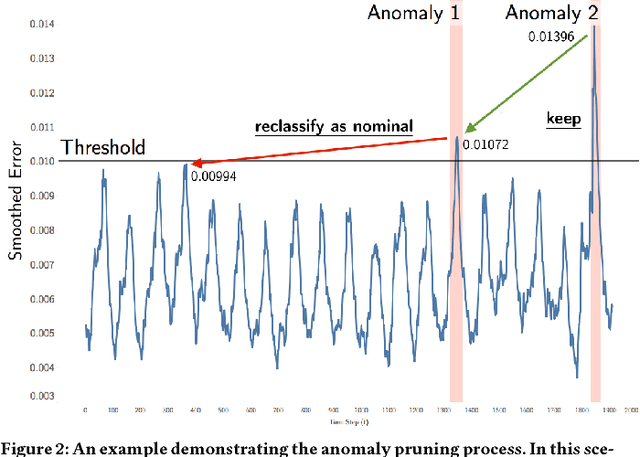
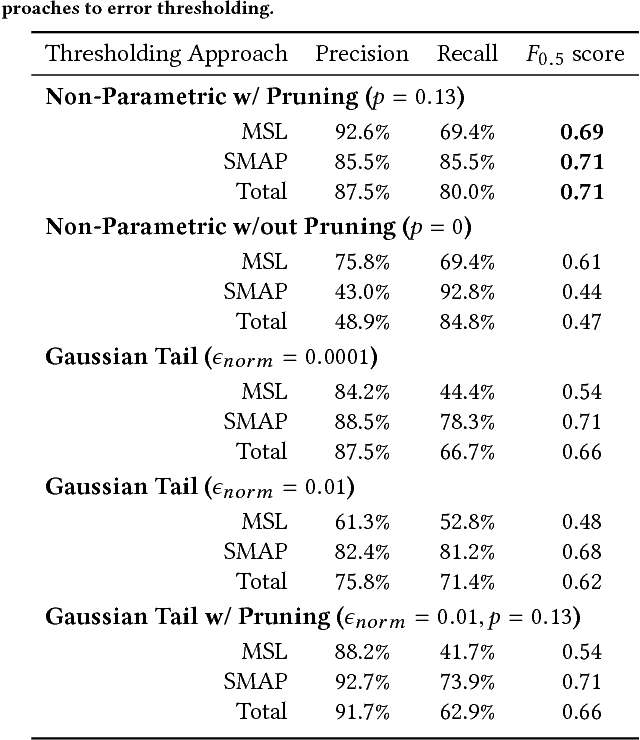
Abstract:As spacecraft send back increasing amounts of telemetry data, improved anomaly detection systems are needed to lessen the monitoring burden placed on operations engineers and reduce operational risk. Current spacecraft monitoring systems only target a subset of anomaly types and often require costly expert knowledge to develop and maintain due to challenges involving scale and complexity. We demonstrate the effectiveness of Long Short-Term Memory (LSTMs) networks, a type of Recurrent Neural Network (RNN), in overcoming these issues using expert-labeled telemetry anomaly data from the Soil Moisture Active Passive (SMAP) satellite and the Mars Science Laboratory (MSL) rover, Curiosity. We also propose a complementary unsupervised and nonparametric anomaly thresholding approach developed during a pilot implementation of an anomaly detection system for SMAP, and offer false positive mitigation strategies along with other key improvements and lessons learned during development.
 Add to Chrome
Add to Chrome Add to Firefox
Add to Firefox Add to Edge
Add to Edge